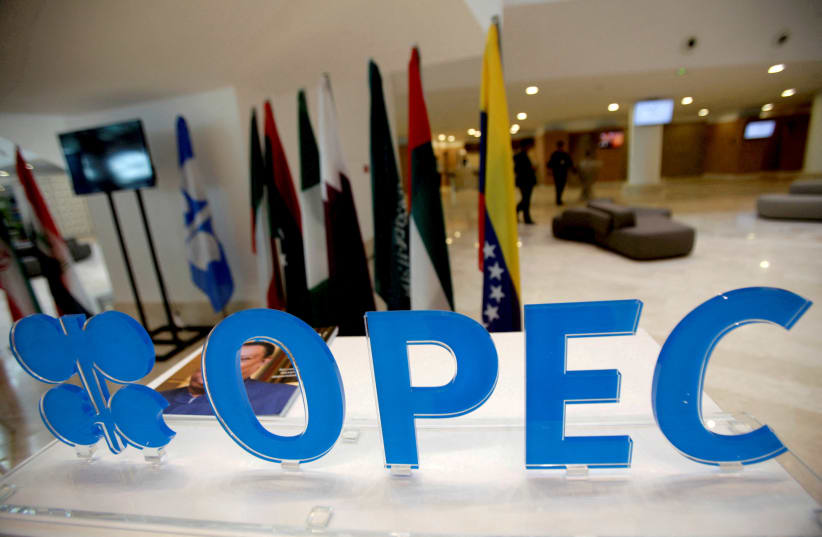The Organization of Petroleum Exporting Countries (OPEC) has decided to cut oil production by two million barrels per day, creating the potential for economic fallout in the West, where markets are already wary due to the war in Ukraine and high tensions with Russia as well as the reverberations in the wake of the COVID-19 pandemic. Major norms in the West, such as relying on China for goods, are now called into question as well, as supply chains buckle and China continues to impose its lockdowns.
Founded in 1960 in Baghdad, OPEC has 13 members, including Iraq, Iran, Venezuela, Saudi Arabia, Kuwait, and the UAE among others. Qatar, which was a member since 1961, pulled out in January 2019 amid the crisis between Doha and Riyadh.
The decision by OPEC to cut oil production is seen as potentially upsetting the US mid-term elections and this has led to increased anger among US politicians over the cuts, which will actually begin in November after the election.
Reverberations of Saudi-US tensions
The anger at Saudi Arabia in the US could affect larger regional issues and accusations that Riyadh has sided with Moscow, could accelerate recent global shifts where some countries have decided that the West is declining and that they should hedge their bets by working with Russia, Turkey, Iran or China.
India has also appeared to hedge its bets, deciding not to condemn Moscow’s invasion of Ukraine despite western pressure. Of course, this brings the US’s “new world order” full circle because George H.W. Bush decided to anchor his new world order during a speech over Saddam Hussein’s invasion of Kuwait. Now, Kuwait and Saudi Arabia, as well as Iraq (which the US invaded in 2003), seem to have drifted away from Washington’s line.
For voices in Washington the anger at Riyadh’s stance is palpable. Some officials feel betrayed although others have argued for more than a decade that the US should end its partnership with Saudi Arabia and shift course to work with Iran or other countries.
In general, the historic view that US policy in the region was tied to US-Saudi, US-Turkey and US-Israel relations meant that America’s role was basically resting on these three pillars. Some voices dating back to the Obama administration wanted a radical shift in these foundations; making the US rely less on Jerusalem, Riyadh and Ankara. Unsurprisingly, all three countries could read the US media and commentary suggesting this shift, and so most of them made choices reflecting it.
The Trump administration shifted back to a policy that was linked to backing Israel, Saudi Arabia and Turkey but by that time, Turkey had already purchased the S-400s from Russia and Ankara was threatening NATO allies and also invaded Syria.
Turkey-US relations have nosedived and Ankara often threatens US partners in Europe and stirs up problems, while US-Israel relations meanwhile have flourished. The Abraham Accords brought many benefits to Israel and also to US strategy in the region; including new partnerships with US Central Command and the Negev Summit.
But a big question mark still hangs over US-Saudi relations. When US President Joe Biden came to the region, he visited Israel and Saudi Arabia. For some in the US there is a sense of betrayal, that Riyadh was supposed to do what the US wanted now that Biden had gone to the country. For others, this is merely a foregone conclusion and a self-fulfilling prophecy; they have opposed Riyadh for more than a decade, and some have opposed the current leadership in Riyadh since Mohammed Bin Salman rose to power and after the Jamal Khashoggi killing in 2018.
Without going into all the details of these controversies, the point is that there are several foreign policy camps in Washington who follow Saudi policy; those that want a close relationship with Saudi Arabia; those that want a transactional relationship; those who think Riyadh must do what the US wants, or be jettisoned; and those who dislike Saudi Arabia intensely; either its current leaders, or the country in general.
Biden's gas gamble
Now, let’s go back and look at what happened and how this could affect the region. Back in April, the Biden administration and the US Department of Energy announced they had awarded contracts for all of the initial 30 million barrels put up for sale as part of President Biden’s Strategic Petroleum Reserve Release. The White House said, “these barrels will be delivered in May and June, and are the first US sale in the largest release from reserves from both the United States and the rest of the world in history. Together, these releases will put more than one million barrels per day on the market over the next six months and will help address supply disruptions caused by Putin’s further invasion of Ukraine and the price hike that Americans are facing at the pump.”
By July, the US was selling an additional 20 million barrels from the reserve. Republicans in Congress have expressed concern that the reserve has now fallen from some 650 million barrels to some 450 million, according to reports. It’s apparently even less than that now; although the White House doesn’t want more releases than the 180 million barrels it authorized.
With that in mind, the US administration was gambling that OPEC would not cut production, because there is a clear window from September to the elections in November when the reserve isn’t supposed to continue to keep prices low. Oil is often influenced by futures, meaning traders buy financial instruments linked to the future price of oil, depending on what people think that might be.
In April 2020 oil futures fell below zero dollars, meaning in some ironic imaginary way that only works in financial markets, people were ostensibly being paid to get oil for free. That’s not what happened in practice, but the point is that oil fell to historic lows. Two years later, with the war in Ukraine, the opposite was happening; the price of oil was going through the roof.
But it’s not all bad news. Oil prices have dropped a bit depending on some other issues, such as demand in China. In fact, a month ago, CNBC reported that oil slid to a seven-month low due to concerns over China. But that hasn’t helped enough and the Biden administration wants prices down, below three or four dollars per gallon.
Meanwhile, prices rose due to tensions in Iraq and an oil spill in Basra. Iran’s recent attacks on Iraq also haven’t helped; nor has political chaos in Baghdad and fighting between tribes and militants in Basra. This means that the OPEC price cut may increase the price in the near term; but overall, there are many places that countries can go to buy their oil production, beyond OPEC.



